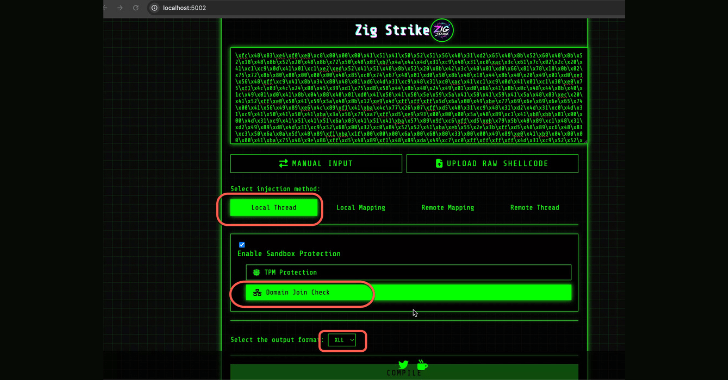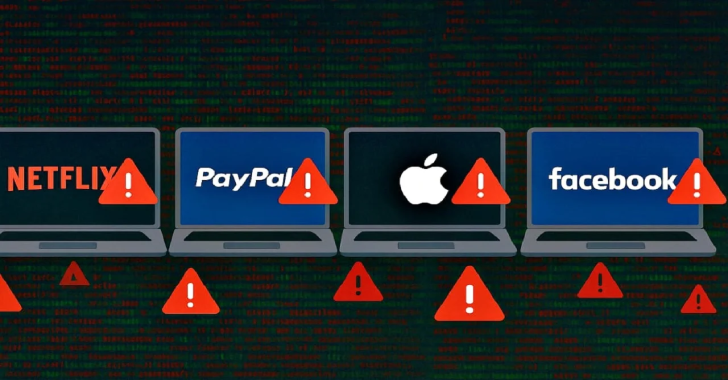How Attackers Are Defeating Content Security Policy with Modern HTML Injection

Recent research and real-world incidents have shown that Content Security Policy (CSP), a widely used web security standard, can be bypassed by attackers using advanced HTML injection techniques. This article explains how these attacks work, highlights practical examples, and provides actionable steps to help organizations strengthen their defenses. What is Content Security Policy (CSP)? CSP is a browser feature that allows website owners to specify which sources of content (like scripts, styles, and images) are trusted. Its main goal is to prevent malicious code, such as that used in cross-site scripting (XSS) attacks, from running on web pages. While CSP is a valuable security layer, it is not immune to bypasses, especially when other vulnerabilities exist. How HTML Injection Can Bypass CSP Evolving Attack Strategies Attackers have adapted to CSP by exploiting HTML injection flaws, vulnerabilities where untrusted input is rendered as HTML. Unlike classic XSS, HTML injection does not always require JavaScript, making it a subtle but effective way to undermine CSP protections. Common Bypass Techniques Real-World Example A recent case involved a web application with a login form and dashboard protected by a nonce-based CSP. The vulnerability was due to unsanitized user input rendered via .innerHTML. Researchers combined HTML injection, CSS-based nonce leakage, and browser cache manipulation to extract the nonce and execute malicious scripts, all while CSP was active. Step-by-Step Attack Flow Impact Detection and Mitigation Detection Mitigation Expert Insights Security professionals emphasize that CSP is only one part of a robust security strategy. While it reduces the risk of XSS and code injection, attackers continue to find creative ways to bypass it. Ongoing monitoring, regular policy updates, and a layered approach are essential for effective defense. Frequently Asked Questions Question Answer (Summary) What is CSP and how does it work? CSP restricts which content sources are trusted, blocking unauthorized scripts and resources. How can attackers bypass CSP protections? Through HTML injection, nonce leakage, form hijacking, and abusing trusted endpoints. What is HTML injection and how is it different from XSS? HTML injection inserts malicious HTML, while XSS injects and executes JavaScript. Can HTML injection be used to bypass CSP? Yes, especially when combined with techniques like nonce leakage and DOM manipulation. What are real-world examples of CSP bypass techniques? Attacks using form hijacking and nonce leakage have been observed in the wild. How do you prevent HTML injection attacks? Sanitize input, use strict CSP, and avoid rendering user input as HTML. What are the limitations of CSP? CSP is not foolproof; misconfigurations and advanced attacks can bypass it. Are there payloads/tags for HTML injection on CSP-protected sites? Yes, attackers use crafted forms, CSS selectors, and DOM manipulation payloads. How do form hijacking and meta tag redirects relate to CSP bypass? They exploit HTML injection to manipulate form actions or redirect users, bypassing CSP. Conclusion Modern CSP bypass techniques using HTML injection highlight the need for continuous vigilance and layered security. Organizations must go beyond basic CSP implementation, combining strict input validation, regular policy audits, and defense-in-depth strategies to stay ahead of evolving threats. Understanding these sophisticated attack vectors and applying best practices is essential for protecting web applications and users. Table: Common CSP Bypass Techniques and Mitigations Technique Description Mitigation Strategy Form Hijacking Injecting or altering forms to steal data Sanitize input, restrict form-action DOM Manipulation Altering DOM to enable script execution Validate input, avoid dangerous patterns Nonce/Hash Leakage Extracting CSP nonces/hashes to run scripts Restrict style sources, monitor nonces Cache Exploitation Using cache to persist malicious content Control cache headers, audit CSP Trusted Endpoint Abuse Leveraging open endpoints allowed by CSP Limit trusted sources, disable JSONP
ModSecurity WAF Vulnerability Enables DoS Attacks via Empty XML Payloads

A newly disclosed vulnerability in ModSecurity, one of the most widely adopted Web Application Firewalls (WAFs), has raised alarms in the cybersecurity community. This flaw enables attackers to launch Denial of Service (DoS) attacks by sending empty XML tags in crafted HTTP requests, effectively rendering web servers unresponsive. Why ModSecurity Is Critical ModSecurity is an open-source WAF deployed globally to protect web applications from common attacks such as SQL injection, cross-site scripting (XSS), and more. It inspects and filters HTTP requests against predefined security rules, serving as a crucial shield for millions of websites. However, its ubiquity also makes it an attractive target. Any weakness can have far-reaching implications for businesses and users who rely on it for protection and uptime. Understanding the Flaw Researchers discovered that ModSecurity does not properly handle empty XML elements within HTTP request bodies. Specifically, when processing XML payloads that contain nested or repetitive empty tags, the WAF enters a resource-intensive state. This leads to: An attacker can exploit this by automating requests with malicious XML payloads, creating a sustained DoS condition without needing high bandwidth or advanced capabilities. The Risk in Practice Unlike vulnerabilities that allow data theft or remote code execution, this flaw primarily impacts availability. However, downtime can translate into financial loss, reputational damage, and customer dissatisfaction, making it a serious concern. Attackers could also leverage the disruption as a smokescreen to mask additional malicious activity or to exhaust incident response resources. Recommended Mitigations Security and IT teams should act promptly to reduce exposure: Proactive monitoring and layered defenses can help mitigate both known and emerging attack vectors. Key Lessons Learned This vulnerability highlights critical truths about cybersecurity: Organizations should continually review their defenses, not only against external threats but also to ensure their security stack itself cannot be turned against them.
Chrome 0-Day Vulnerability: Hackers Actively Exploiting Critical Flaw

A critical zero-day vulnerability in Google Chrome has been discovered and is already being exploited by attackers in real-world scenarios. This high-severity flaw, tracked as CVE-2025-6554, impacts Chrome’s V8 JavaScript engine and gives threat actors the ability to execute arbitrary code remotely. What Makes CVE-2025-6554 So Dangerous? The vulnerability stems from a type confusion bug, a flaw that occurs when a program misidentifies the type of an object during execution. This confusion can corrupt memory and let attackers run malicious code directly on your device. Even more concerning, simply visiting a compromised website could be enough to trigger this exploit. In other words, attackers don’t need to trick users into downloading anything; they just need them to land on the wrong page. Who Discovered It? The bug was uncovered by Clément Lecigne and Benoît Sevens from Google’s Threat Analysis Group (TAG). Their past work has exposed spyware campaigns and high-level exploits. The fact that they identified this flaw suggests it could be linked to targeted cyber-espionage efforts. Google’s Response: Emergency Patch Rolled Out Google responded swiftly, pushing out a security patch through Chrome’s auto-update system. To manually check for updates: Chromium Browsers Also at Risk This flaw isn’t limited to Google Chrome. Other Chromium-based browsers like: …may also be vulnerable if updates haven’t been rolled out. Users of these browsers should check for recent patches and install updates as soon as they’re available. Why This Matters: Exploits Already in the Wild Google confirmed that CVE-2025-6554 is under active exploitation. That means attackers are already using it against real-world targets. This isn’t a theoretical threat, it’s happening now. Browser vulnerabilities are highly valuable to cybercriminals because they provide direct access to users’ devices, often without any interaction. From installing spyware and keyloggers to stealing sensitive credentials, the possibilities are alarming. How to Protect Yourself If you’re part of a corporate IT team: Final Thoughts: A Wake-Up Call for Web Security CVE-2025-6554 isn’t just another Chrome bug—it’s a reminder of how fast vulnerabilities can be weaponized in the wild. The moment a zero-day is uncovered, the race begins: attackers look to exploit, while defenders rush to patch. In today’s threat landscape, staying current is your first line of defense. Don’t wait, just update now and educate your team.
Zig Strike: Meet the Next‑Gen Toolkit Redefining AV & EDR Evasion

Zig Strike isn’t just another payload generator, it’s a full-on offensive toolkit built in the Zig programming language, purpose‑made to slip past antivirus (AV), next-gen AV (NGAV), and even Endpoint/XDR platforms like Microsoft Defender for Endpoint (MDE). In this article, we’ll unpack what makes Zig Strike so effective, explore the injection tricks it uses, and reveal why defenders should take notice now. Why Zig Matter? Zig isn’t C, isn’t Rust, it’s a modern system’s language that shines with compile‑time execution, manual memory control, and cross-platform building.That means Zig Strike generates stealthy payloads, with no detectable patterns, minimal runtime metadata, and deeply embedded shellcode routines. KPMG dubbed it “the ultimate toolkit for payload creation and evasion”, and it’s earned that name. Four Injection Techniques for Ultimate Stealth Zig Strike comes loaded with four powerful techniques to inject malicious code: Each technique makes detection far harder, especially when used alongside compile-time obfuscation and anti-sandbox checks. Evasion Mechanics: Obfuscation & Sandboxing Intelligence Zig Strike isn’t just clever; it’s cautiously designed: Web Interface Makes Red Teaming Simple Zig Strike’s web dashboard (Python + Flask) lets users: This makes it usable even for less experienced red‑teaming teams, speeding up testing and stress‑testing defenses. Real-World Impact: What Security Teams Need to Know KPMG and other cybersecurity firms have stressed the need to upgrade detection logic beyond traditional hooks. Defenses: How to Protect Your Environment FAQs Q: What is Zig Strike?A modern, open‑source toolkit (written in Zig) used to craft AV/EDR-evading payloads. Q: Can it bypass Microsoft Defender?Yes, local tests confirm it bypasses MDE, as reported by KPMG. Q: Is this for criminal use?It’s designed for red vs blue team testing, though like any tool, it can be misused. Q: Is Zig Strike free?Yes, the GitHub repository is open source under GPL-2.0. Final Takeaway Zig Strike proves that modern languages + clever obfuscation + injection techniques can seriously challenge endpoint defenses. If you’re in red-team or security ops, add it to your threat model, and review your detection rules accordingly. Defense in depth is no longer optional, it’s mandatory.
U.S. House Bans WhatsApp on All Official Devices, WHY?

The U.S. House of Representatives has officially banned the use of WhatsApp on all House-managed devices. Staff members are being instructed to uninstall the app by June 30, 2025, due to growing concerns about its data handling and security risks. According to a memo issued by the Office of Cybersecurity, WhatsApp is now considered a “High Risk Application” that poses potential threats to sensitive communications. 🔴 Why the sudden ban? The memo highlights WhatsApp’s lack of transparency, unencrypted data storage, and concerns around unauthorized data access. What Does the Ban Include? This isn’t a partial restriction. The ban covers all official devices: That means whether you use WhatsApp through the mobile app or browser, it’s completely prohibited on official U.S. House equipment. Meta Responds – But It May Not Be Enough Meta (formerly Facebook), the parent company behind WhatsApp, responded by defending its end-to-end encryption protocols. According to a Meta spokesperson: “No one, not even WhatsApp, can read users’ messages. Messages do not get stored, and encryption is enforced.” Still, House cybersecurity teams remain unconvinced, particularly over concerns about metadata tracking, cloud backups, and third-party access. The Bigger Picture: A Government Shift Toward Secure Communication This isn’t the first time the U.S. government has cracked down on widely-used tech platforms: The House’s stance is clear: if a tool doesn’t meet strict security criteria, it doesn’t belong on a government device. What Messaging Apps Are Still Allowed? If not WhatsApp, then what? According to the memo, staffers may continue to use these pre-approved secure communication tools: Each of these apps is considered more secure for sensitive government operations, especially regarding how data is encrypted and stored. Spyware, Metadata & National Security The decision also ties into ongoing concerns about spyware tools like Pegasus and Paragon Graphite, which have exploited messaging platforms in the past. Even encrypted apps can be vulnerable if: This is a preventive measure—better safe than breached. 🧠 Frequently Asked Questions (FAQ) Q: Is WhatsApp banned in the U.S.?👉 No. It is only banned on official U.S. House of Representatives devices. Q: Why was WhatsApp banned by the U.S. House?👉 Due to concerns over data storage, metadata access, and lack of transparency. Q: Can staff use WhatsApp on personal devices?👉 Yes, but only if those devices are not connected to House systems. Q: What apps are still allowed for communication?👉 Signal, Microsoft Teams, iMessage, FaceTime, and Wickr. Final Thoughts This ban highlights the growing need for zero-compromise security standards in U.S. government communication. With potential surveillance and privacy risks looming over every app, the House is tightening its cybersecurity protocols, and WhatsApp just didn’t make the cut. Whether you’re a policymaker, IT admin, or regular user, this is your signal to start taking data privacy and communication security more seriously.
Major Websites Hijacked: Fake Support Numbers Planted on Facebook, Netflix & Microsoft

Imagine searching for help on Facebook, Netflix, or Microsoft, and being tricked into calling a fake support number. That’s exactly what just happened. Cybercriminals have hijacked how legitimate websites display content by injecting fake phone numbers into their search results and pages. This new twist on an old scam is catching users off-guard, and it’s happening on some of the biggest platforms in the world. What Really Happened? Security researchers have uncovered a clever abuse of search parameters, those little text strings you see in a website’s URL after you run a search. For example:https://facebook.com/search?q=support What hackers realized is that many sites, including Facebook, Netflix, and Microsoft, don’t properly sanitize or validate this user input. That means if someone tweaks the URL, they can make arbitrary text, like a phone number, show up on the page. Attackers began exploiting this by inserting fraudulent customer service numbers into these search results. When unsuspecting users looked for help, they’d often see these hijacked pages in Google search results… and believe them to be legitimate. Why This Is So Dangerous Let’s say you’re having trouble with your Netflix login. You search online for “Netflix customer support,” and you click on what looks like a legit Netflix link. The page even has the official Netflix layout, logo, and branding, but there’s a fake phone number prominently listed. When you call it, you’re connected to a scammer who pretends to be a Netflix agent. They might say: These scams can lead to: Who’s Behind This? This isn’t your average script kiddie attack. These appear to be organized threat actors or SEO scammers using a technique known as Search Parameter Injection. It’s part of a broader trend where attackers manipulate how web content is rendered, without ever breaching the site itself. In many cases, attackers embed their own content (fake numbers, phishing links) into legitimate URLs. These manipulated URLs are then indexed by Google or Bing, making them look trustworthy when users search for help. And since the base domain is still “facebook.com” or “microsoft.com,” most users don’t suspect a thing. What Are Facebook, Microsoft, and Netflix Doing About It? At the time of writing, there hasn’t been a direct public statement from the affected companies. But security experts are urging these platforms to: This incident is drawing comparisons to past search parameter abuse cases, such as Google’s search redirect exploits and Apple tech support scams. How You Can Protect Yourself This kind of scam can trick even tech-savvy users. Here’s how to stay safe: The Bigger Lesson: Website Security Still Has Gaps What this shows is that even tech giants are vulnerable if input isn’t sanitized properly. Search parameter injection is a low-tech, high-impact attack that can affect any site with dynamic content. And here’s the kicker: the websites aren’t technically “hacked.” The attack happens through the front door, via poorly handled search strings and dynamic content rendering. This is a wake-up call for web developers and cybersecurity teams everywhere. You don’t need a zero-day to wreak havoc. Sometimes, a simple unchecked URL is all it takes. FAQs – What People Are Asking What is a Search Parameter Injection Attack?It’s when attackers insert text (like fake phone numbers) into a site’s search URL to make that content appear on a legitimate page. Are Facebook, Netflix, and Microsoft actually hacked?No. Their websites weren’t breached. The attackers exploited how the sites display user-generated text. Is it dangerous to call these numbers?Yes! You may be speaking to scammers trying to steal your personal or financial data. How can I verify a support number is real?Always visit the company’s official Help or Contact page—not just what you find on search engines. Final Thoughts This incident is a powerful reminder that even trusted websites can be misused in creative and malicious ways. Cybercriminals are getting more sophisticated, and they know how to manipulate search behavior, URL structures, and user trust. The best defense? Awareness, education, and vigilance. As users, we must double-check before we click or call. And as developers, it’s time to close these loopholes, because small cracks lead to big damage.
Denial of Service (DoS) Attacks – What You Really Need to Know

What Is a DoS Attack, Really? Let’s break it down simply: A Denial of Service (DoS) attack is like jamming the phone lines of a business so real customers can’t get through. Instead of phone calls, it floods a website or online service with so much fake traffic that it slows down, or completely crashes. The goal? To make sure the service becomes unavailable to real users. How Does a DoS Attack Work? DoS attacks overwhelm resources like bandwidth, memory, or CPU usage. Here’s a basic example: Think of it like pouring water into a glass non-stop until it spills. Types of DoS Attacks DoS isn’t one-size-fits-all. Some common types include: Each type hits a different layer of the network stack, but the goal is always the same: make the service go dark. DDoS vs. DoS – What’s the Difference? DoS is a single source attack. DDoS (Distributed Denial of Service)? That’s when an army of infected devices (aka a botnet) attack all at once. Imagine one person yelling at a receptionist non-stop (DoS) vs. an entire crowd doing it (DDoS). The impact is much worse. Why Do Attackers Launch DoS Attacks? Motivations vary, but common reasons include: Sometimes, it’s even just for fun—yes, some hackers are just showing off. Real-Life DoS Attack Examples Example 1: GitHub – The Largest DDoS Ever In 2018, GitHub was slammed with 1.35 Tbps of traffic—one of the biggest attacks in history. Luckily, they recovered quickly using automated mitigation tools. Example 2: Dyn DNS Attack In 2016, major websites like Twitter, Netflix, and Reddit went down due to a DDoS attack on Dyn, a key DNS provider. How Can You Protect Against DoS Attacks? Here are practical defenses: Prevention isn’t perfect, but mitigation can make a huge difference. Final Thoughts – Why This Matters to Everyone You don’t need to run a huge tech company to be affected. Small businesses, e-commerce stores, schools—anyone online is a potential target. With DoS attacks becoming more affordable (even rentable via the dark web), it’s vital to stay informed and protected. Knowing the basics could save you hours of downtime and thousands of dollars. FAQs: Quick Answers to Popular Questions What is the difference between DoS and DDoS?A DoS comes from one source; a DDoS comes from many (usually a botnet). Can DoS attacks be traced?Yes, but it’s challenging if attackers use spoofed IPs or VPNs. Are DoS attacks illegal?Absolutely. Launching a DoS attack is a criminal offense in most countries, including the U.S. How long do DoS attacks last?They can last from minutes to hours or even days, depending on the attacker’s goal and defenses in place. Can my website be a target?Yes. Any online service can be a target—especially if it handles transactions, stores user data, or has competitors.
Linux Privilege Escalation Vulnerabilities Let Attackers Gain Full Root Access

How These Hidden Flaws Could Hand Over Your Entire System to Hackers 1. The Silent Power Grab Happening Inside Your Linux System They’re In, and You Don’t Even Know It — How Local Bugs Become Full-Blown Breaches Most people think of hackers breaking in from the outside. But what if they don’t have to? In many Linux systems, attackers don’t need to find a remote backdoor — they just wait for someone to log in normally… then use hidden bugs to escalate their privileges and take over the system completely. In this article, we’ll walk you through: 2. What Is Privilege Escalation in Linux? (And Why Should You Care?) From Nobody to God — How Hackers Hijack the ‘Root’ of Your System In simple terms, privilege escalation means gaining access rights that you’re not supposed to have. For example: There are two types: Why it matters: Once an attacker has root access, they can: 3. How Attackers Pull It Off: Real Tactics They Use Inside the Hacker’s Toolkit — How They Break the Rules (and Win Big) Here’s how attackers typically pull off privilege escalation: Common techniques include: Real-world example: Attackers have used Dirty Pipe (CVE‑2022‑0847) to overwrite read-only files and gain root access — all from a local, unprivileged shell. 4. Notable Linux Vulnerabilities That Grant Root Access Cracks in the Foundation — These Bugs Can Break Your Entire System Examples include: Why they’re dangerous: These bugs don’t need remote access. All it takes is local execution, which can happen after phishing, credential theft, or weak user controls. 5. What Happens After They Get Root? (And How You Can Tell) You’ve Been Owned — But Could You Even Tell? Once the attacker has root, the game changes. They can: Detection is possible, but tricky. Watch for: Image Suggestion: Flowchart showing signs of root-level compromise post-exploitation. 6. Preventing Privilege Escalation — Think Beyond Patching You Can’t Patch What You Can’t See — Here’s What Actually Works Yes, patching is important, but it’s not enough. Hardening strategies that actually make a difference: Special tip for containers and VMs: Use seccomp profiles, gVisor, or Kata containers to restrict system calls. 7. Patch Management and Prioritization Framework Don’t Just Patch Fast — Patch Smart Step 1: Prioritize Based on Exploitability Step 2: Assess Business Impact Step 3: Scope and Rollout Plan Bonus Tip: Use vulnerability scanners like OpenVAS, Qualys, or Tenable 8. Detection Tools and Automation Workflows Spot the Hack Before It Happens — Tools to See the Invisible Recommended tools: Automation tips: 9. Testing Your System’s Resilience Hack Yourself First — Before Someone Else Does Testing techniques: Create a resilience scoreboard: Category Risk Found? Fix Applied? SUID Binaries Yes ✅ Done Kernel Exploit No N/A Unprotected Cron Jobs Yes ✅ Hardened 10. Real-World Incident: From Exploit to Root Access One Slip — Total Takeover: A Hacker’s Privilege Escalation in Action Scenario walkthrough: Mapped to MITRE ATT&CK: Phase MITRE Technique Initial Access Valid Accounts (T1078) Discovery System Info Discovery (T1082) Privilege Escalation Exploitation for Priv Esc (T1068) Persistence Scheduled Task (T1053) Defense Evasion Clear Command History (T1070.003) 11. Final Thoughts: Don’t Just Patch — Prepare Secure the Root of the Problem — Before Hackers Do Privilege escalation isn’t a theoretical risk — it’s how attackers gain full control. You need more than patches: Final checklist: Let this guide be your blueprint to detect, defend, and defeat privilege escalation threats before they root your systems from the inside out.
Fortinet OS Command Injection Vulnerability

Cybersecurity in Today’s Digital Age In this digital era, in which the world has become a global village, protecting digital systems is more important than ever. With businesses relying on technology for everything from communication to transactions, even one small vulnerability can have massive consequences. Fortinet’s Position in Network Protection Fortinet is known for delivering top-tier security tools like firewalls and secure gateways. Their products are used by enterprises and governments alike. But like any software, vulnerabilities can still be discovered, and when they are, it’s critical to act fast. What Is an OS Command Injection? Defining the Threat OS Command Injection is a type of cyber vulnerability where an attacker tricks an application into running system-level commands. It happens when input from users isn’t properly filtered and is passed directly to the operating system shell. How It Functions When software allows external input, like from a form or web request, and doesn’t properly sanitize it, attackers can insert commands. These get executed on the server just like a legitimate admin command. Entry Points for Attackers Indicators of Compromise Inside the Fortinet Vulnerability Which Fortinet Products Are Affected? The flaw affected certain versions of FortiOS and FortiProxy, specifically versions with a web management interface that permitted unsafe command execution under specific conditions. Technical Analysis of the Issue The vulnerability, listed under CVE-2023-34992, stemmed from unsafe processing of user input in the web interface. If a logged-in user exploited it, they could execute commands on the host OS, essentially gaining deeper control of the device. Why the Flaw Exists It boils down to missing input validation. The system trusted data entered via the user interface without checking it properly, leading to unauthorized command execution paths. Risk Assessment This vulnerability received a critical risk rating, with a CVSS score nearing 9.3. That means it was easy to exploit and had a high impact on affected systems, making it extremely dangerous. Evidence of Exploitation How Hackers Take Advantage Soon after the vulnerability became public, cybercriminals began scanning for Fortinet devices on the web. By using automated tools, they identified systems that hadn’t yet been patched, and exploited the flaw to plant malware or open backdoors. Attack Groups and Tools Used Groups linked to state-sponsored operations and organized cybercrime were seen exploiting this flaw. Security researchers tracked signs of APT (Advanced Persistent Threat) involvement, and tools like Metasploit modules were adapted quickly. Consequences of the Exploit Organizational Exposure A compromised Fortinet device can act as a highway into the rest of your network. Hackers can: Financial and Operational Fallout Besides data breaches, businesses may face: Detection and Fixes Signs You’ve Been Targeted Admins should watch for: Fortinet’s Patch and Advice Fortinet responded by releasing a fix and issuing an advisory urging users to update affected products. Customers were advised to upgrade to the latest secure versions and restrict access to the web interface. Safe Update Guidelines Workaround Methods For users unable to patch right away: Long-Term Security Practices Keep Your Systems Updated Updates fix known flaws, it’s that simple. Automate updates where possible and stay informed through vendor security bulletins. Watch Your Network Closely Deploy monitoring tools to detect strange behavior. Set up alerts for failed login attempts, configuration changes, and traffic anomalies. Educate Your Staff Employees are often the weakest link. Teach them to recognize suspicious activity, avoid risky behavior, and report issues quickly. What This Incident Teaches Us Lessons for the Security Community Even the most trusted brands can have vulnerabilities. This case highlights the importance of proactive testing, responsible disclosure, and fast patching. The Need for Better Development Standards Secure coding isn’t optional. Developers must use input validation, conduct code reviews, and implement security-by-design principles from day one. Conclusion The Fortinet OS Command Injection vulnerability is a reminder that no system is invincible. Whether it’s a firewall, router, or any other security device, a single flaw can put everything at risk. Staying secure isn’t just about having the right tools. It’s about using them wisely, keeping them updated, and staying ahead of threats before they become disasters. FAQs What role does Fortinet play in cybersecurity? Fortinet provides security solutions like firewalls, VPNs, and intrusion detection systems for organizations around the world. How dangerous is OS command injection? It’s highly dangerous. Attackers can run system-level commands that give them control over servers or network devices. What can I do to avoid such vulnerabilities? Keep your software up to date, restrict access to critical interfaces, and monitor for suspicious activity regularly. How fast did Fortinet respond? Fortinet acted promptly by issuing patches and public advisories soon after the vulnerability was confirmed. Is Fortinet still reliable after this? Yes, as long as you’ve updated your devices. The key is regular maintenance and applying security updates without delay.
Google Warns of Cybercriminals Increasingly Attacking US Users to Steal Login Credentials

Cybercriminal activity targeting American users has surged, prompting a stark warning from Google’s Threat Analysis Group (TAG). According to a recent advisory, attackers are becoming more aggressive and sophisticated in their efforts to harvest login credentials from unsuspecting victims across the U.S. At CyberProShield, we dissect this urgent security alert and explore what it means for individuals, businesses, and security professionals. As phishing campaigns escalate and social engineering grows more deceptive, the stakes have never been higher. Surge in Credential-Theft Campaigns: What Google Uncovered Google’s Threat Analysis Group revealed a sharp rise in credential-harvesting campaigns originating from both cybercrime syndicates and nation-state actors. These malicious campaigns are exploiting: Google’s researchers emphasized that these campaigns are not only increasing in volume, but also in complexity—making them harder for traditional spam filters and antivirus tools to detect. Who’s Being Targeted? The scope of these attacks is disturbingly broad. Targets include: The common denominator? Anyone who lacks modern cybersecurity hygiene or is unaware of phishing trends. How Cybercriminals Steal Your Credentials Here’s a step-by-step breakdown of how most of these attacks work: Many users don’t realize they’ve been compromised until financial damage, reputation loss, or identity theft has already occurred. Why This Is a National Cybersecurity Concern Credential theft is often the first step in broader attacks such as: With U.S. infrastructure, healthcare, and education sectors under increasing pressure, stolen credentials serve as the gateway to major cyber incidents. Google’s Recommendations for Protection In response to this rise in credential-theft activity, Google offers several recommendations: ✅ Enable 2-Step Verification (2SV) Use multi-factor authentication on all accounts—especially email, financial, and work-related platforms. 🔐 Use a Password Manager Generate and store strong, unique passwords for every account. Avoid reusing login credentials across platforms. 🚫 Don’t Click Suspicious Links If an email or text feels off—don’t interact with it. Verify URLs by typing them manually into your browser. ⚠️ Report Phishing Immediately Use Gmail’s “Report Phishing” feature or alert your IT/security team. Early detection helps stop widespread breaches. 🔍 Regularly Audit Your Accounts Use Google’s Security Checkup tool or your device’s native tools to identify risky activity. How CyberProShield Helps You Stay Secure At CyberProShield, we believe cybersecurity is a daily habit, not a one-time setup. With expert insights, threat intelligence, and practical guides, we empower users and organizations to: Whether you’re managing your own business or protecting your family, knowledge is your first layer of defense. Final Thoughts from CyberProShield As threat actors sharpen their tools, American users must sharpen their awareness. This isn’t a drill—it’s a widespread digital attack on your privacy, finances, and identity. 🔐 Don’t wait until your account is hijacked.📥 Stay informed, stay cautious, and trust CyberProShield for real-time cybersecurity guidance.